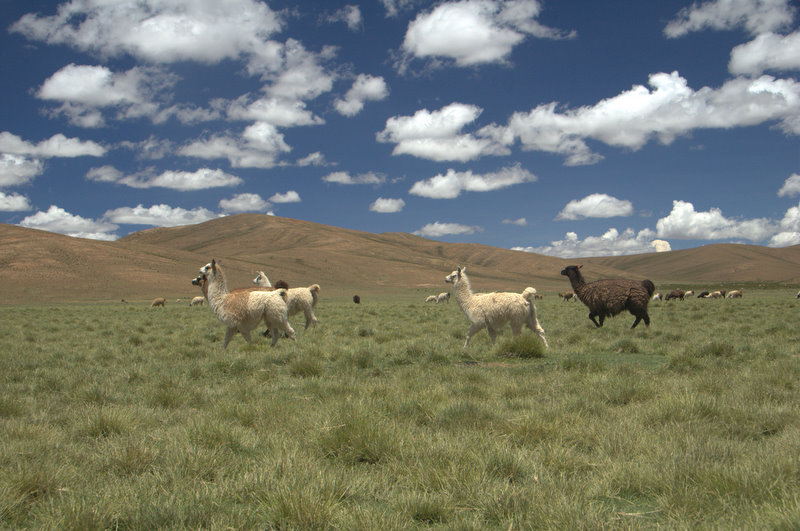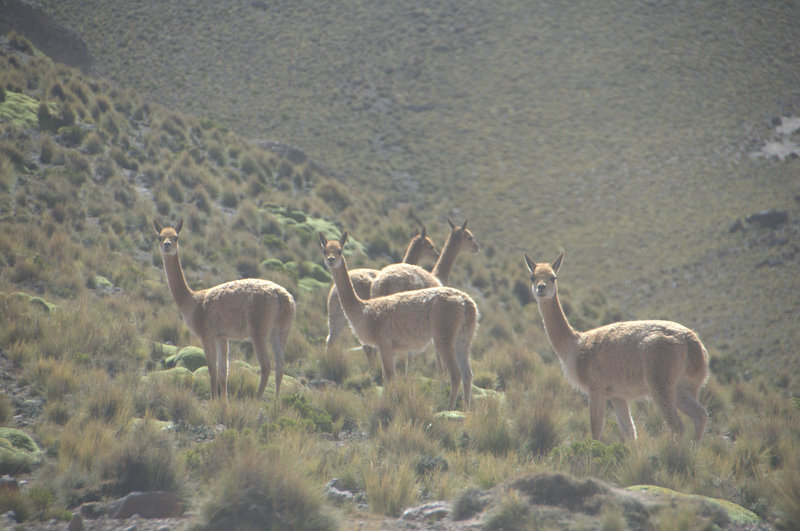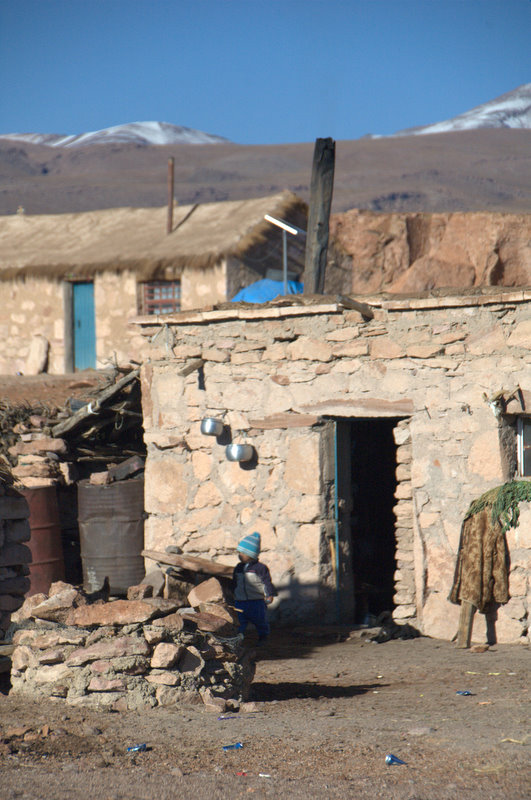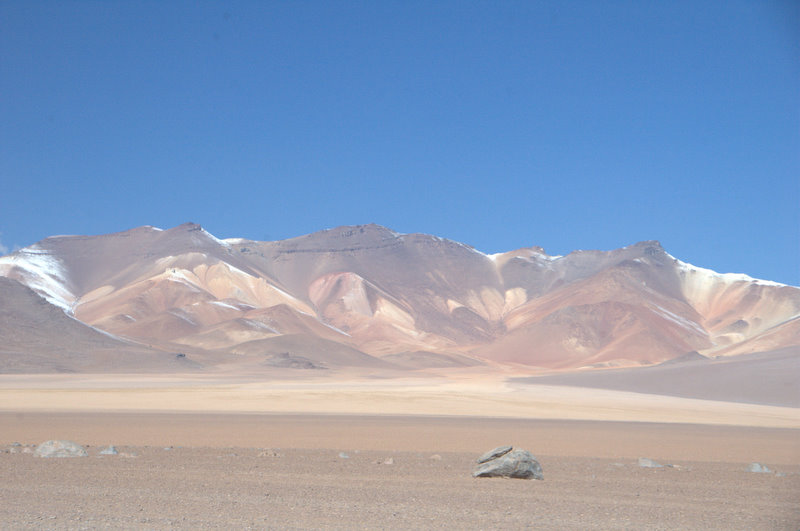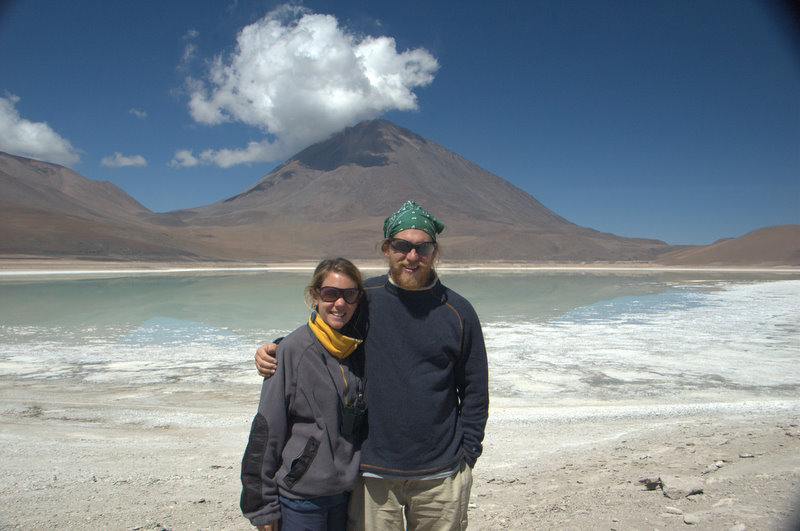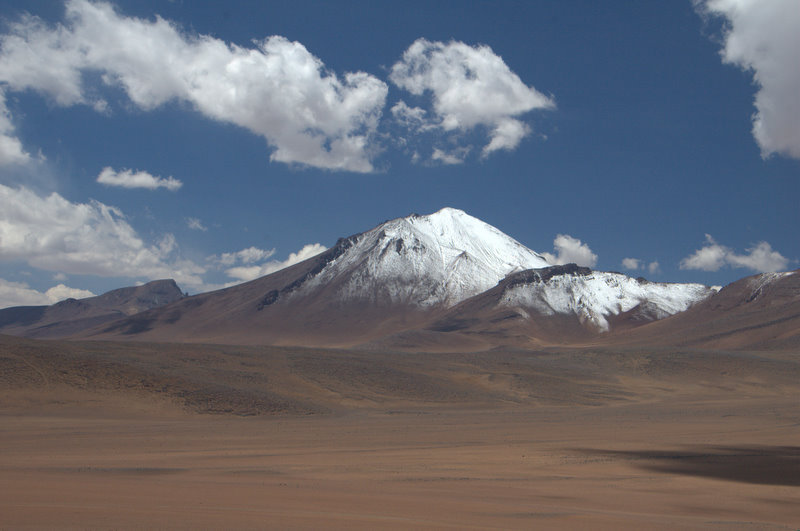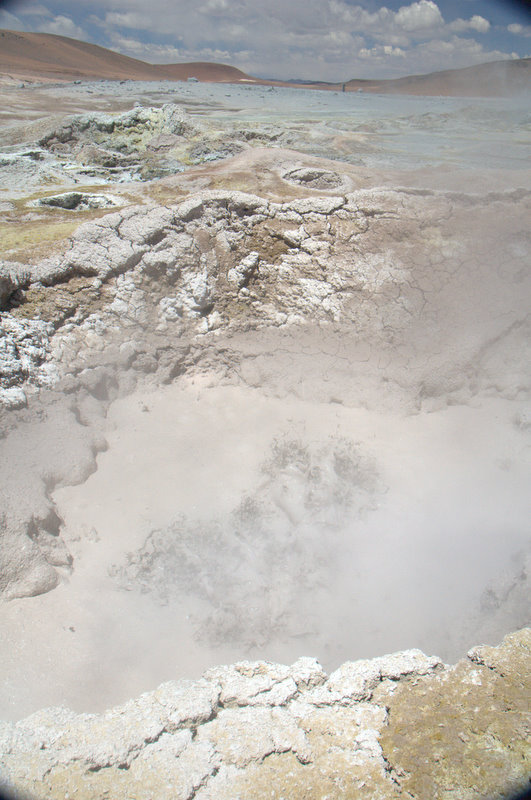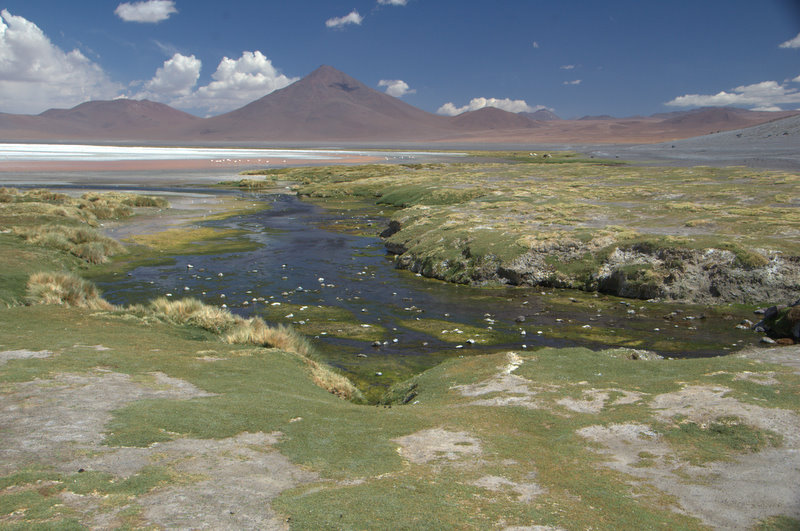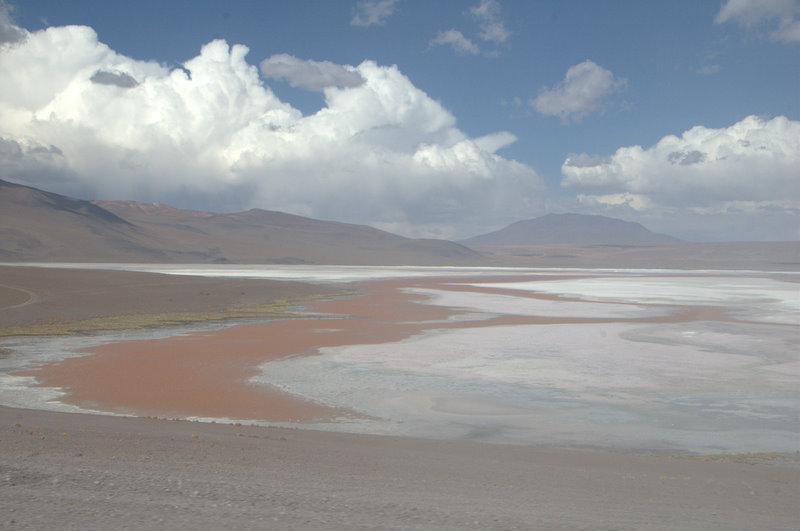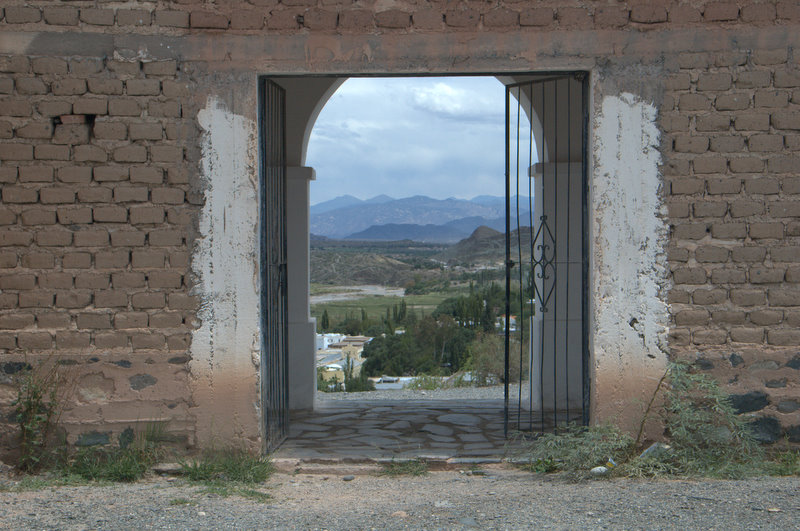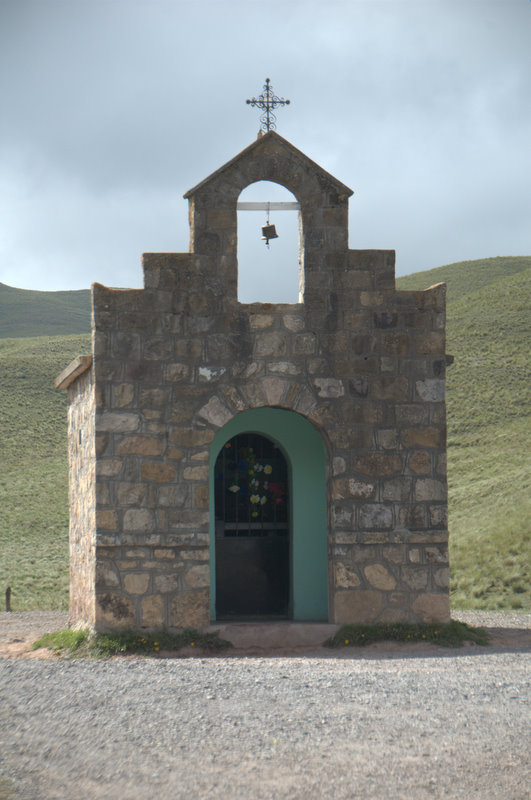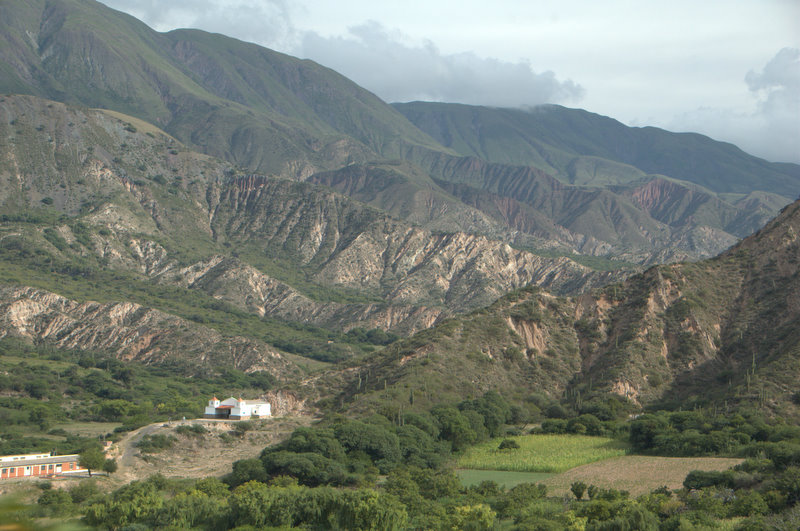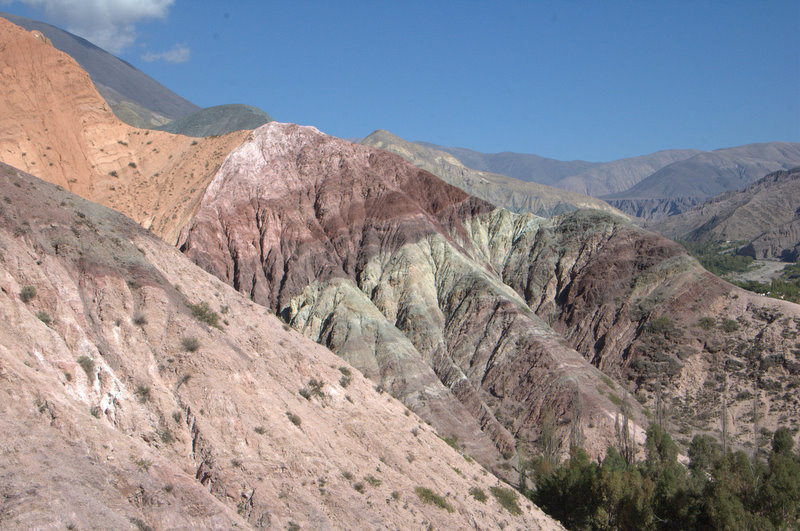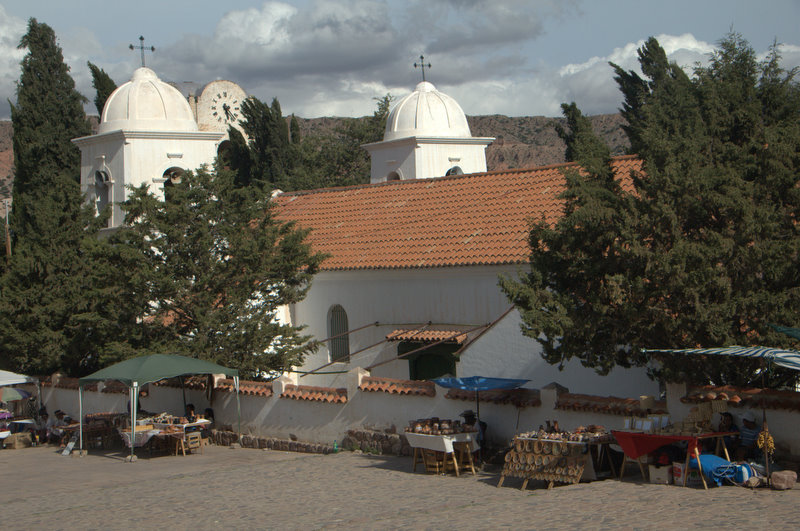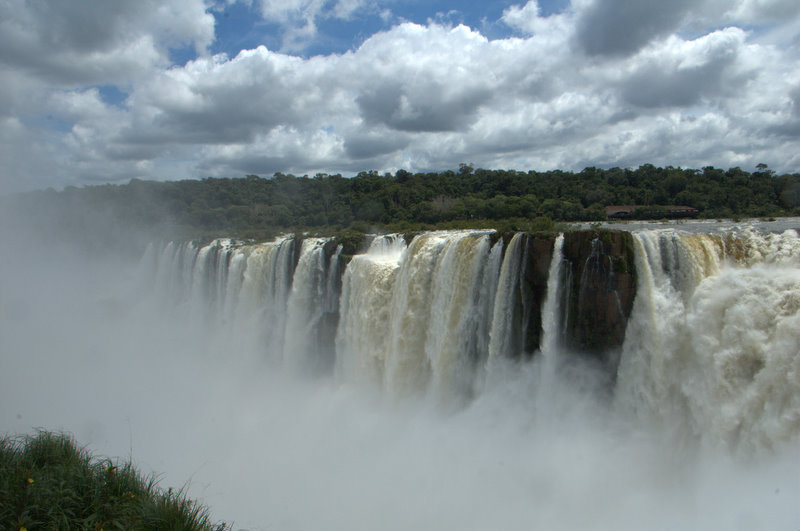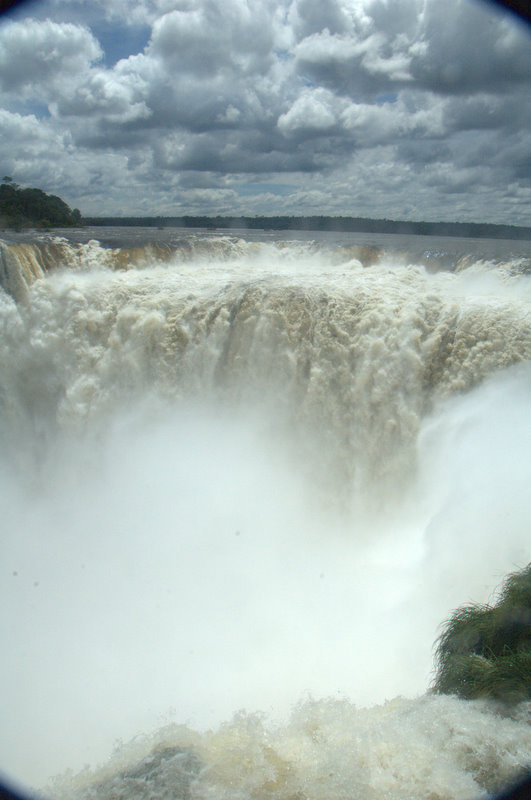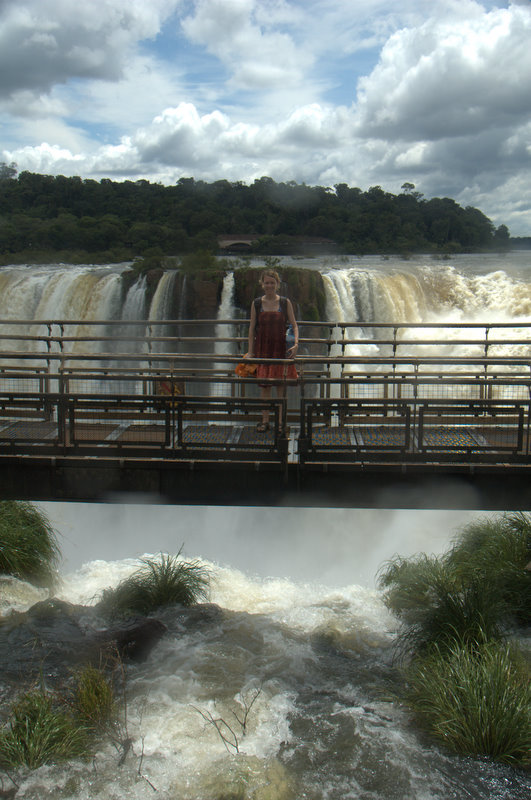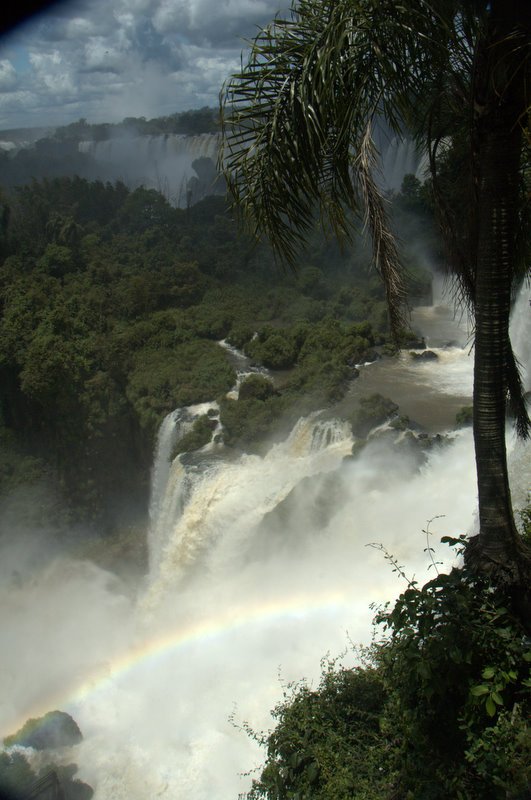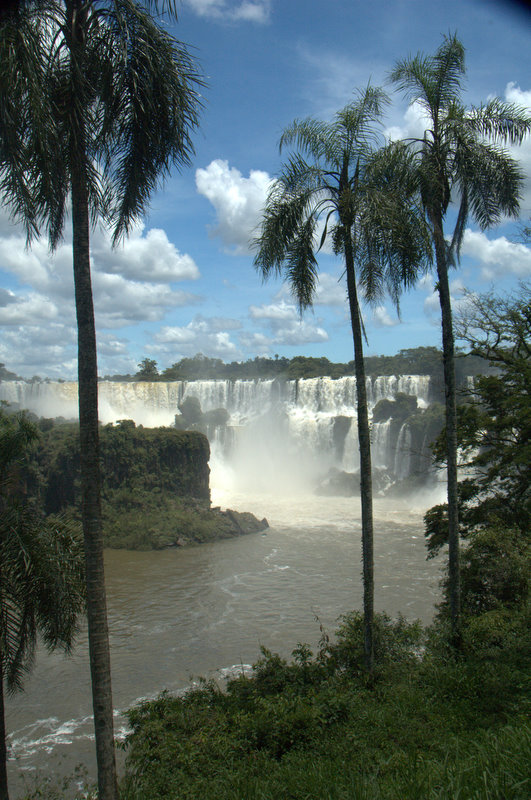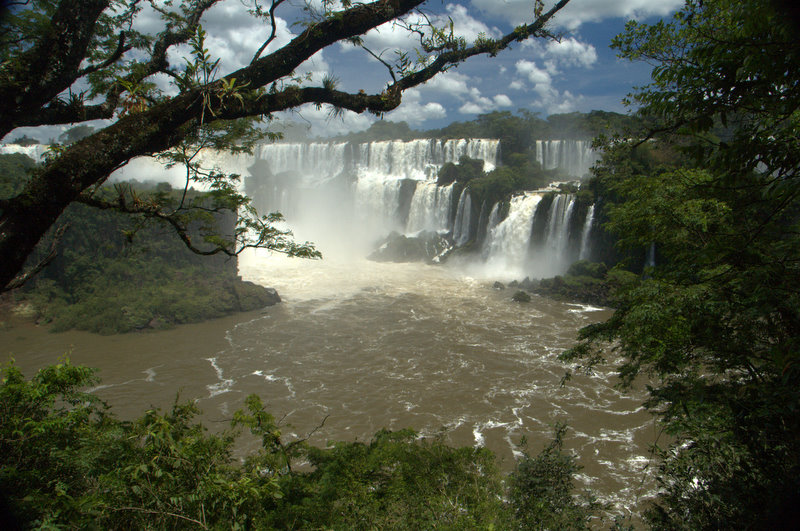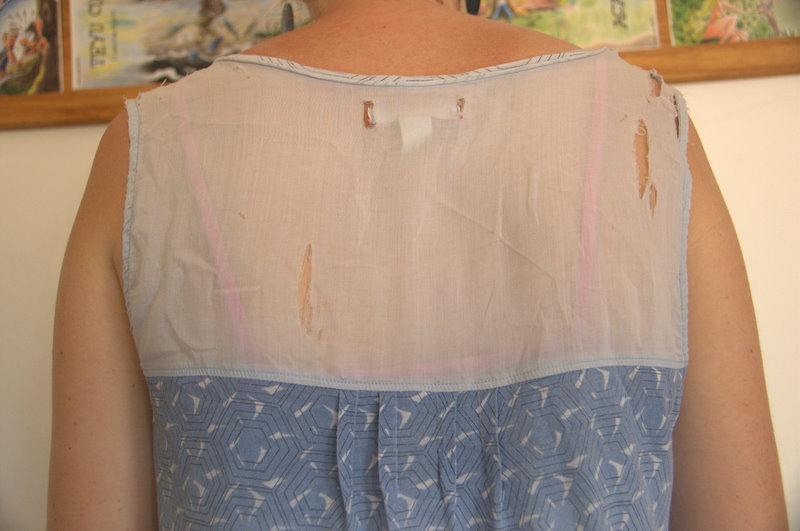We have arrived this afternoon in Puno, Peru, a city of about 100K citizens that sits on the western shore of Lake Titicaca. We have reached the final country of our world tour, and now only have about a week and a half of this trip left. One of my common habits is to write out a little calendar of the next couple of weeks on the backside of a piece of paper, as we are pretty much just making this all up as we go. It was incredible this afternoon to make a calendar with three weeks on it, and to see that it won´t be filled up; we´ll be home before the end of the second week.
Let´s go back about a week. As of my last post, we´d landed in the crap town of Uyuni. I don´t want to complain, but I can´t illustrate what Uyuni is like without being negative. Basically, it is a town that exists for two reasons: for the harvest of salt from the nearby Salar, and for tourists who come to join the type of tour that we took out into the Salar. There was little evidence of the salt industry, though I didn´t go looking. As for the tourist industry, it is apparent in the restaurants, tour agencies and accomodation around the town´s center, but what I couldn´t understand was how rude people were to travelers. We had our share of rude people, but apparently it is worse if you are Spanish speaking, because then they can be really rude. We were lucky enough to arrive on the last day of Carnaval; this means that not only did we get to witness the shameless inebriation of the townsfolk, there was also a desperate surge of travelers (especially foreigners who would give a big toe to get out of town) trying to buy one of the limited tickets out of Uyuni. We fought our way into the fray, and managed to get a night bus after wasting a full day and a half in that place.
It was against our judgment to take the night bus, because of rough road conditions, but we did what was necessary to get up to La Paz. Actually, the trip was really quite good, except for maybe the first four hours, which had us on a dirt road heading north out of Uyuni towards Oruro; it was incredibly bumpy, imagine four continuous hours on a washboarded road. Arriving in La Paz was really great, though; I really think that La Paz is one of my favorite cities, and certainly my favorite city in South America. We had made reservations at a hotel, so once we arrived in the very orderly bus station, we made our way down the hill towards the center (La Paz is in a valley, ringed at the top by the slum/suburb El Alto, and everything leads down from there to the center. The view from El Alto is wicked, but we didn´t have any desire to stroll around there, or even get out of the bus). We soon found the hotel, it wasn´t expensive, but it was certainly nicer than any accomodation we´d had for awhile, since we figured we would need a quiet place to rest after the trip to La Paz.
Exploring La Paz was a real joy; it is a truly vibrant city, a mix of traditional and modern, of the classic icon of the ladies in their petticoats and bowler hats, of busy and loud traffic and a witch market selling the fetuses of llamas among other charms and potions. It is a city of stellar views, of steep and cobblestoned streets, of beautiful plazas and churches, and yet a city with an enough of an edge that it keeps you interested. You can´t feel part of a city without taking its public transport, so we boarded a couple of the camiones, which are minivans that follow routes and pick up people along the way. In Kenya, they are matatus, and they have many other names in other countries, but what doesn´t change about them is that riding inside, you certainly feel immersed in the culture. Speaking of which, the city is intoxicating in its culture; the people watchin is superb, we managed to visit at least to the outside of the infamous San Pedro Prison (tours are no longer possible), and wandering through the streets in a vague walking tour that would culminate with ice cream presented endless scenes that seemed right out of the photos of our Lonely Planet, or maybe a National Geographic. (Noted: the locals don´t like having their pictures taken.) Visiting the multiblock outdoor market that sold literally everything one might want was almost overwhelming, while on the other hand La Paz is one massive market; most streets have vendors set up, and some streets are so clogged with stands it is difficult to walk along. For being a Third World Country, there is an amazing amount of stuff you can buy.
Bolivian food isn´t anything to write home about, so we ended up enjoying the multitude of international cuisine present in La Paz (something I found remarkable). We ate at Turkish and Moroccan restaurants, to see how well these styles would be represented in Bolivia. We had the choice of eating sushi, but I don´t think I´d ever be hungry enough to eat sushi in the landlocked and less than sanitary Bolivia. Of course there are the European style restaurants, to cater to the tourist masses. I was still pretty stunned on the variety that we could choose from.
We visited the Coca Museum, which I thought presented the coca plant in a relatively calm manner. This plant, though the source for cocaine, has a pretty remarkable history, and has far greater uses than most people understand. For example, there is a stunning number of medicines that I use as a nurse on a frequent basis that is derived from coca (Novacaine? Bupivicaine?). Most people would not believe how much coca is imported into the US for legal use; I think CocaCola alone imports something like 240 tons annually, as the leaves are used to flavor the drink (cocaine itself is no longer an ingredient). Besides that, coca is heavily engrained in the culture of the people of the Andes, who chew it because it increases oxygenation, suppresses appetite (important for the very poor), and has other properties, none of which are to get high. I can certainly attest that as we wheezed our way up the 45 degree streets of La Paz, I was wishing I was chewing on a big, green, soggy mass of coca leaves.
We stayed three nights in La Paz, and were reluctant to leave. Looking up that last evening at the valley walls, lined with the glittering lights in a way that made it seem like you were flying and looking down at a city, the air clear from the huge rainstorm (including hail) we´d received late in the afternoon, I felt quite at home in the city. Sure, I didn´t feel comfortable walking around with my camera after dark, but then again, I wouldn´t feel so comfortable in NYC in the same situation. At any rate, we were sad to board a bus our last morning and head on for a three hour trip to Copacabana, right on the Peruvian border and the shores of Lake Titicaca.
Peruvians apparently are fond of saying that they received the Titi and Peru got the Caca. Despite the fact that the LP guide describes Copacabana as South America´s Greek island, I´m thinking that Bolivia got a bit of the Caca itself, with this ugly little city. Copacabana is surrounded by swelling green hills, terraced maybe as far back as the Incas, by idyllic farms and the wide open horizon of the massive Lake Titicaca, but somehow all this glory has escaped the townspeople of the Copa. They have strewn trash all over the city in heaps, along the gutters, and covering the mediocre beach; walking out into the countryside, you have to go about a mile or so before the trash along the roads and clogging the streams under the bridges begins to taper off. It was incredible. Also, again we had the misfortune of arriving during their final days of Carnaval, which presented scenes of old ladies falling down in the streets drunk, of men in clown costumes urinating on every corner (and facing into the street), of loud brass bands blasting away at songs they probably played 80 times a day and yet couldn´t stay together on. Everyone was in costume, so the picture opportunities were good, but the noise, the urine, the massive consumption of alcohol (Bolivians, to add to their many woes, drink something called puro, which is rubbing alcohol, 96% strong; they don´t drink for pleasure, only for intoxication and unconsciousness), and the huge inconveniences (shops don´t open, buses are full, even the banks are closed, on Mondays), was just too much. I can say that I hope that we don´t encounter another rural Carnaval celebration on this trip.
Fortunately, we were able to escape and walk out into the countryside, taking a six hour, 20-22 km hike along a rural road. This hike was immensely pleasurable; there were no other tourists, the scenery of hills and farms and lakeshore was terrific, and it all seemed nearly deserted, as apparently most folks were getting fall-down drunk in town. Most Bolivians don´t seem to have much esteem for outsiders (understandable given their sad history), and most of the time they won´t greet you or look you in the face. So we made an effort as we walked to greet everyone that we passed, and to our delight, we received a return greeting from most everybody, and even a couple of enthusiastic and fun conversations with curious old men. The weather was beautiful, and we walked further than we had expected. We were quite tired by the time we stumbled back to our hostel, especially as we were above 3850 meters for the entire hike and had steep climbs to boot, but we were very happy.
Today, we´d planned on visiting the nearby Isla del Sol, a short boat trip away, but we woke up this morning to a heavy rain. Isla del Sol is famous for its Inca ruins, but there are no vehicles on the island, and all of the road are dirt, so even if the weather improved (which it did by noon), trekking on the island would have been a soggy, muddy, miserable experience. So, we checked out of the hostel, bought tickets for Peru, and here we are now.
A good thing, too, because once we had filled in that calendar with our destinations, it became quite clear (given the large distances between them) that our final eleven days of this trip are going to be very, very busy.
Until next time, be safe.

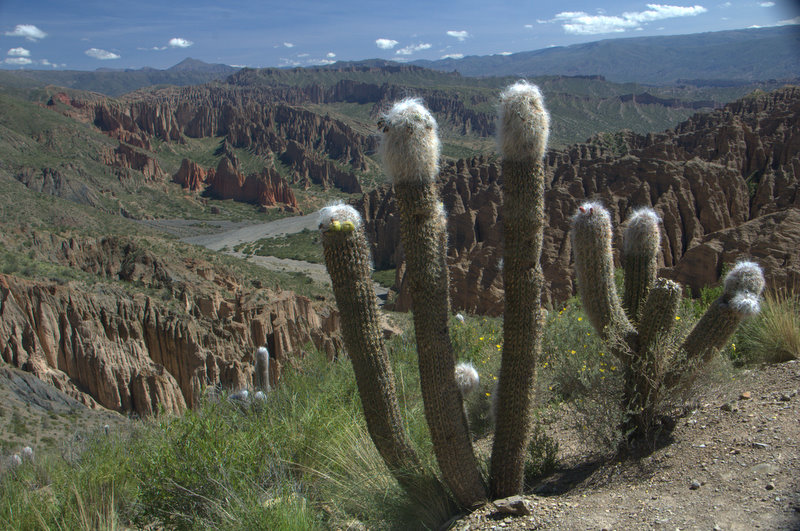 Cactus & Valley, Outside Tupiza
Cactus & Valley, Outside Tupiza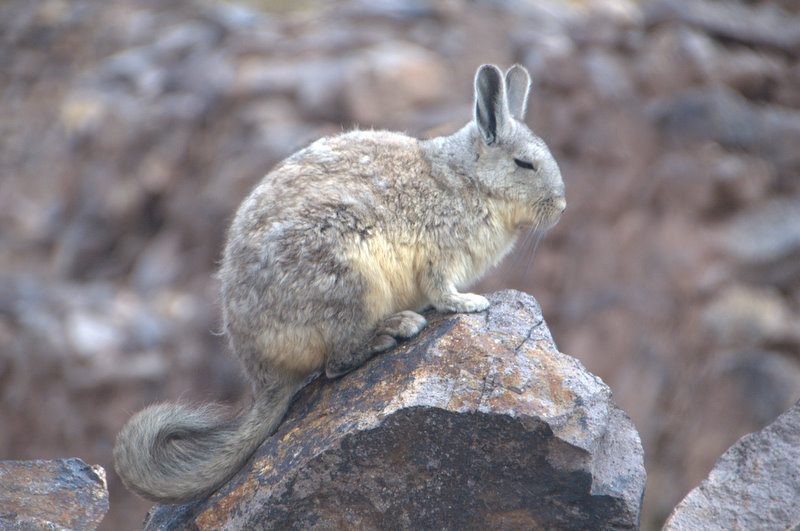 Odd Rodent Common In High Bolivia
Odd Rodent Common In High Bolivia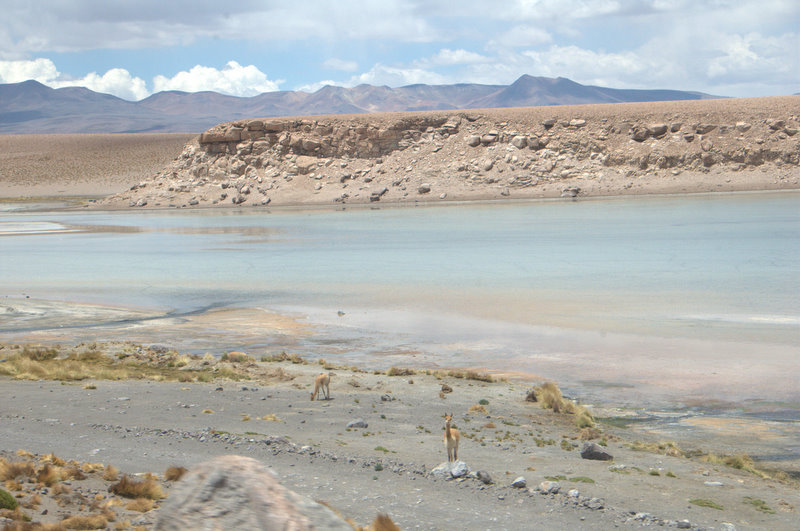 Laguna Verde, Near Chilean Border
Laguna Verde, Near Chilean Border Fumaroles Of Hissing Sulfur Gas
Fumaroles Of Hissing Sulfur Gas Rocks At Mirador Volcan Ollague
Rocks At Mirador Volcan Ollague Rocks & Distant Volcan Ollague
Rocks & Distant Volcan Ollague Jess & Aaron, Sunrise, Salar de Uyuni
Jess & Aaron, Sunrise, Salar de Uyuni Jess & Aaron, Isla del Pescado
Jess & Aaron, Isla del Pescado

